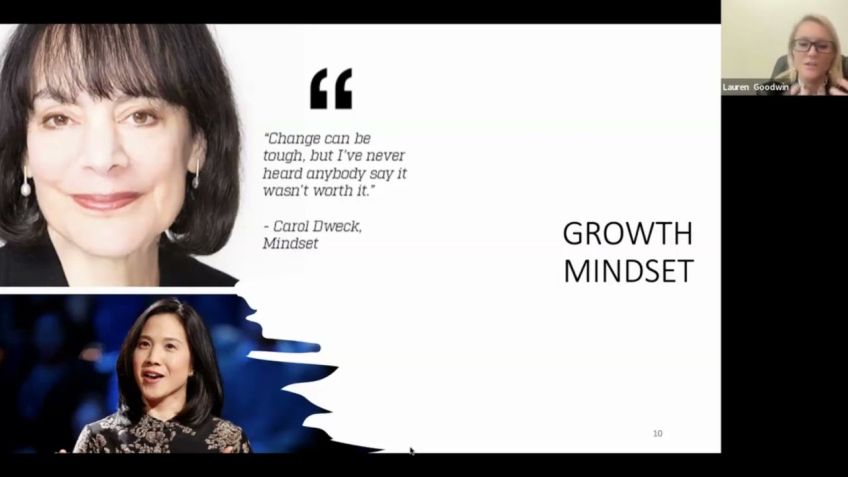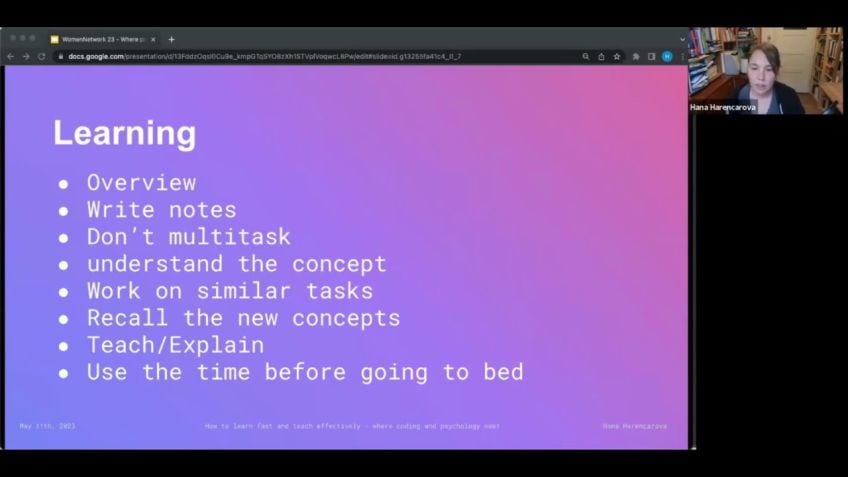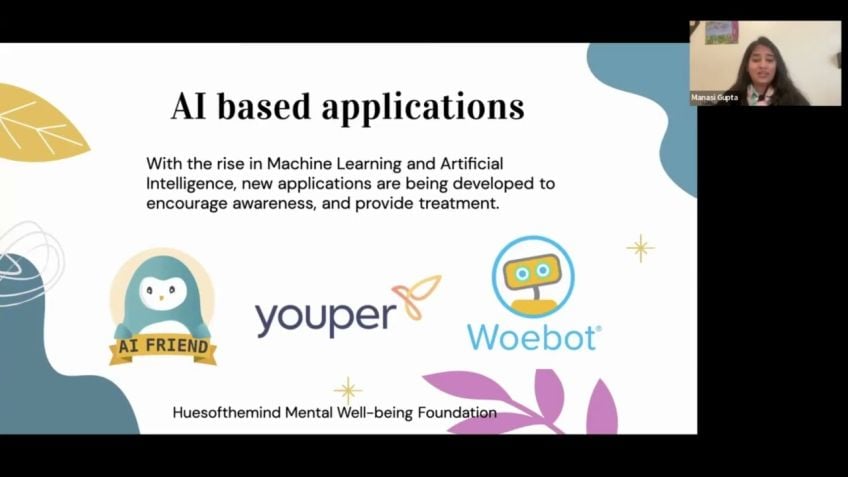Jitka Steinmetz - Going beyond engaging women in Computer Sciences in higher education
Tackling Gender Disparities in Computer Science Education
Hello, everyone! We're very excited today to have here our amazing, strategic and commercially-minded leader, Jitka Taman. Jitka will share her key insights on going beyond engaging women in computer sciences in higher education.
A Bit About Jitka Taman
Currently, Jitka is the Managing Director, Germany at DXC. Lax Soft. She's a reliable partner for international corporations undergoing change, bringing a wealth of knowledge and strategy in her field.
The Current Status in Computer Science Education for Women
According to Jitka, the gender gap in computer science has been closing for the last 20 years. Despite this progress, the proportion of females to males among graduates has diminished from 30% in 2000 to 19% in 2019.
The dropout rate of female students in these fields remains twice as high, which is an alarming trend. Jitka believes the key factor that's been overlooked is the gender preferences in knowledge acquisition and learning.
When assessing her own education, Jitka reveals that the methods employed were sometimes at odds with female learning preferences.
The Past Approach and Current Diversification
The approach to closing the gender gap in computing has been, traditionally:
- Getting girls interested in computing early on
- Breaking gender stereotypes when raising girls
- Female mentoring or role modeling
- Empowering girls to pursue careers in computing
However, per Jitka, recent changes are focusing on taking gender into account in elementary education.
Research findings suggest that boys react better to symbols, whereas girls prefer inductive learning and discover rules from observing examples.
Such schools adapting diverse teaching tactics noticed a drastic reduction in discipline problems and increased number of students excelling.
The Continued Challenge and Potential Solutions
Even with such progress, women's dropout rates remain high. Female staff among the Faculty of Computer Science programs in Germany, for example, is rare, and the initial semesters that provide fundamental courses in computing still contain resources mostly written by men.
On the other hand, addressing potential gender-based learning preferences, such as inductive learning, concrete reasoning, visual sensory preference and context embedding has proven to significantly improve performance.
Jitka's Practical Example: The Turing Machine
Jitka shares her personal journey when studying computer science back in 2001 at the Technical University in Munich. Arriving in a class with a disproportionate number of males, she felt overwhelmed.
One of the subjects taught was the Turing Machine, explained using abstract diagrams and symbols. The boys seemed to grasp technical lecture while she found herself lost.
Jitka ultimately recognises that a different teaching approach could've helped her understand Turing machines as quickly as her male counterparts. A preferable method might have been a practical demonstration of Turing machines, a tangible image or a clearer purpose to understand the topic better.
Conclusion
Through Jitka's expertise, we understand the importance of recognising and addressing gender-based learning preferences in STEM studies to help reduce the dropout rates.
The challenge lies in carrying the same gender-diverse teaching methods identified in primary education, to higher education. This seems imperative to tap into the full potential of female talent in the tech industry.
As Jitka aptly concludes, a clear understanding, purpose and practical approach could indeed help overcome traditional gender disparities in computer science and higher education. Let's strive together for a more inclusive, diversified learning environment that serves everyone equally.
Video Transcription
Hi, everyone. Welcome back. And I'm here with Jitka Taman. In her key note, she's going to share about going beyond engaging women in computer sciences in higher education. She's a strategic, commercially minded aja leader and a reliable partner for people in international corporations undergoing change.
Currently working as a managing director, Germany at DXC. Lax Soft. It's my pleasure to have you here with us, Jitka.
Thank you, Ana. Thank you very much. It's my pleasure to be here. Um So I've seen some sessions and it was very inspiring and very nice. And also you feel like um being a part of a bigger um uh a bigger piece of a community and it's, it's, it's really fantastic. So thank you for inviting me and having me here. So, um as Anna said, my topic here is uh education and education of uh women um or let's say, preferences of women when it comes to teaching and knowledge acquisition. And um not to be only purely theoretical, I will also make an example of a lesson one held at my during my studies at a technical university in uh in Munich. And the other one showing how I would have wished that the topic was presented to me back then. So you ready? Let's go ahead. Um The gender gap in uh computer science has been closing for the last 20 years with record numbers of girls obtaining academic qualifications in computer science such as the general certificate of secondary education in the UK.
This is an incredible change and a result of countless efforts to inspire, encourage, educate, advice, fund and enable girls to graduate in stem or computer science in particular and to pursue careers in these disciplines. Even though the total number of women earning bachelor's degrees in se feels slowly increasing. The proportion of females to males among graduates has diminished from 30% in the 2000 to 19% in 2019. Even more remarkable is the dropout rate of female students in these fields which remains twice as high as that of males. There must be a reason leading to this disparity based on my personal experience and available research. I believe that the one factor that has not been fully examined until now is the gender preferences in knowledge acquisition and learning. As I said after the short introduction to the current status of research um in this field and its application, I will demonstrate my observations for this.
I chose the turing machine. One of the fundamental introductory lessons in computer science. I will reflect on how this piece of knowledge was explained to me. And uh how I believe the teaching method was at odds with female learning preferences. In the past, the approach to closing the gender gap in computing was set predominantly based on the following. Getting girls interested in computing, young and early feeling safe and secure and having fun, computing, breaking soul, gender stereotypes when raising girls um female mentoring or role modeling and also, for example, empowering girls to pursue computing careers as an option to improve their family's welfare.
In far there has been a diversification. A change ongoing, a change ongoing in uh focusing on elementary education and educational strategy, taking gender into account. The change was motivated by um let's say some research found findings uh for example, that boy lateralized brain activity, they answer better when using symbols in teaching and spatial mechanical functioning. This facilitates a preference for deductive learning and a loss of focus.
When the teacher uses more words than diagrams, girls demonstrate more communication between hemispheres in the brain and a higher number of neural connections, they tend to prefer inductive learning. Uh that means discovering rules by observing examples and to anchor knowledge by putting it in a wider context.
Schools that adapted diverse teaching tactics not only increased the number of students excelling in every subject area but also experienced a drastic reduction in discipline programs. Despite the impressive progress of female empowerment in computing, the dropout rates of women remain high in comparison to those of their male counterparts. When we look at graduate programs in Computer Science in Germany, we observe a persistent male denomination of the environment, female staff among the Faculty of Computer Science programs are very rare. The read increase for the initial four semesters that provide fundamental courses in computing contain contains book and notes written by man. Yes, there are retention initiatives and there are best practices of retention initiatives and these continue focusing of, let's say the adult areas I highlighted before such as reducing lack of belonging to the community, developing confidence, empowerment, tutoring, mentoring, or for example, funding uh for maternity leave and study yet teaching remains almost exclusively.
There are exceptions almost exclusively in the hands of males. Research demonstrates and we could see it on the uh on the example of the uh primary education and uh let's say ongoing diversification of teaching methods that there are potential gender-based learning preferences and then addressing them improves learning performance for some to me, unexplainable reason.
However, this is hardly acknowledged in higher education. What are the female learning preferences that could be addressed? One inductive learning. This is the one referred by female and this is a process in which the learner discovers the rules. By first observing examples, males prefer deductive learning in which they are given rules and apply them. Second concrete reasoning, the preference of inductive or deductive reasoning also demonstrates that in problem solving males gravitate to art's abstract arguments, but females excel at concrete analysis visual sensory preference, uh such as uh multimodal learning, including more visuals and language.
And last but not least context embedding, which means embedding new knowledge into a wider context of other sciences or society or any other uh uh useful context. OK. So I'm now at the end of my theoretical introduction, summing up, we see that there has been research and there has been a change going on in primary education when it comes to identifying or acknowledging learning preferences, for example, based on the gender. And these are being addressed it a a adjusting or diversifying on on further developing the teaching methods. At the same time, the same uh uh let's say situation continues also in higher education. But there is uh just very little done and addressed when it comes to the different learning preferences. My hypothesis here is that it could be one of the probably many other factors that um maybe the reason um for the high dropout rates of female uh when it comes to um studying computer science. So let's move to the practical example, I hope you'll enjoy. So um now I'm trying to get you back to the to school as you see also with my background um when I started studying computer science at the Technical University in Munich, it was in 2001. So it it has been 20 years. So things have changed.
But still back then, I was one of 10 female students in a group of 500 freshmen. The introductory session was held in the school's historic auditorium um that could house such a large number of students. The disproportionate number of males was overwhelming if not intimidating.
And after that, interestingly, I only ever saw one of my fellow 10 women in lectures over the following four semesters. Consequently, I was the only woman in the introductory main course as well as in the first lesson that was dedicated to the Turing machine. There were two lecturers, two guys and they taught us follows. The turing machine is basically a general example of ac pu it consists of an infinite length tape divided into cells and a heart that can read and write onto the tape and move left or right. The machine stops when it reaches its final state, the state changes as indicated by a set of instructions. So the machine performs those instructions when it is in a specific state. This is a very simple machine that can perform any computer algorithm. The boys faces were blank.
I felt like I was drawing an abstraction and that I lacked some extensive previous knowledge needed to follow the lesson. I had many questions, but I didn't dare be the only one to raise my hand. So the lecturer continued. The program can also be represented with a state diagram. As in the following example, each transition from A to B is labeled as A to BL when in the current state A is the symbol A. Then the machine goes to the state B and all writes the symbol of A with B when in state Q zero or state A um is here in the picture, uh The symbol at the head is empty, it will be over written by with zero. And the date moves to the right A turing machine can be formally defined as um you see here this description by a finite set of states counting um input alphabet, tape, alphabet, set of transition functions, initial state, accept state and at the end, the reject state. Well, my confusion was increasing. Uh Some boys were taking short notes and some were looking at the screen, some were looking out of the window with unreadable expressions. The lecturer then asked the students to break into groups of three and to create a turing machine that would find 101 in a string of symbols. The boys started discussing and scribbling on a piece of paper and one group after another showed signs of having found a solution.
I was sitting next to my group um remained silent and was waiting. What happens? I felt humiliated. I knew that I am at least equally intelligent as the rest of the group. But this explanation of turing machine didn't work for me. I felt that a different approach would help me understand turing machines equally as quickly and as thoroughly as and I was completely missing the. So what there are certainly other methods for developing the same knowledge within the same period. Here is my example of a different approach that might have worked for me back in 2001. Let's make a picture. A turing machine is a machine that consists of a hat that can read and write and a tape with symbols on it. The tape moves the head can read the symbols on it depending on the symbol, the tape moves to the left or right and the machine can or must not overwrite the symbol on the tape. Well, good start. I would say so I have a very good image. Now in my head, what could be a potential demonstration of the theoretical turing machine? But I still have question. First of all, how does the machine know how to interpret the symbols? And what kind of symbols are these? And so what?





